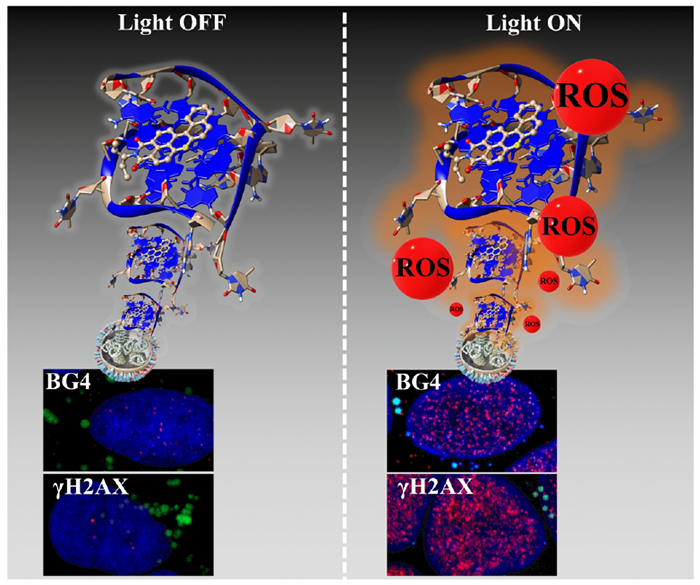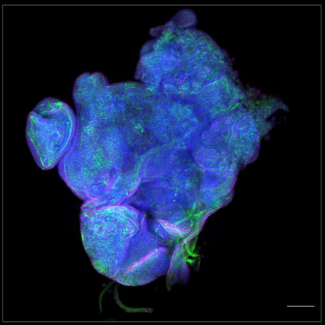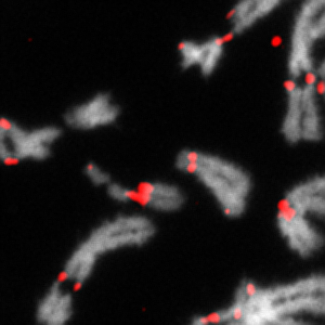
New molecule to target and eradicate cancer cells with light
|
|
Scientists from the CNRS, ENS de Lyon, University of Angers, and Claude Bernard Lyon 1 University, in collaboration with colleagues from Swedish and South Korean institutions, have developed a new molecule that selectively accumulates in cancer cells and, after exposure to light, turns toxic. In the laboratory, it has shown itself more effective than other therapeutic photosensitizers in current use, even at much lower concentrations. The team’s work will be published in Nucleic Acids Research (16 May 2023).
Used primarily for treating certain cancers, photodynamic therapy (PDT) is relatively noninvasive. It relies on photosensitizers, molecules that, after being excited by light, transfer their energy to diatomic oxygen (O2) in target cells. This makes the oxygen toxic to them, resulting in cell death.
A multidisciplinary international collaboration between researchers from the CNRS / ENS de Lyon Chemistry Laboratory, the Building Blocks for Future Electronics Laboratory in South Korea (CNRS / Sorbonne University / Yonsei University), and the Moltech-Anjou laboratory (CNRS / University of Angers) has culminated in the design of a new photosensitizer dubbed DBI. These scientists have discovered that DBI is far more effective than other PDT photosensitizers now used, suggesting therapeutic doses 10 to 100 times lower than the latter. This means using DBI could limit potential adverse reactions in healthy tissues. The team’s Swedish colleagues have characterized and tested the efficacy of DBI on human cells in vitro, and on zebrafish embryos in vivo.
The precursor for DBI is a dye originally used by the textile industry with an annual production measured in tonnes. Chemical alteration of its structure by the scientists gave it new photosensitization properties as well as the ability to interact with the DNA in exosomes, vesicles found in unusually high numbers within cancer cells. DBI tends to accumulate within exosomes, where, once excited by light, the molecule triggers oxidative stress that breaks the DNA down and ultimately kills the cell.
Additional studies now in progress seek a potential clinical application for DBI.

Above the micrographs are models of the complex that DBI forms with specific DNA sequences (telomeres).
© Sabouri et al. / Nucleic Acids Research
New G-quadruplex-specific photosensitizer inducing genome instability in cancer cells by triggering oxidative DNA damage and impeding replication fork progression. Marco Deiana, José María Andrès Castán, Pierre Josse, Abraha Kahsay, Darío Puchán Sánchez, Korentin Morice, Natacha Gillet, Ranjitha Ravindranath, Ankit Kumar Patel, Pallabi Sengupta, Ikenna Obi, Eva Rodriguez Marquez, Lhoussain Khrouz, Elise Dumont, Laura Abad Galán, Magali Allain, Bright Walker, Hyun S. Ahn, Olivier Maury, Philippe Blanchard, Tangui le Bahers, Daniel Öhlund, Jonas von Hofsten, Cyrille Monnereau, Clément Cabanetos, and Nasim Sabouri. Nucleic Acids Research, 16 may 2023. DOI : 10.1093/nar/gkad365

